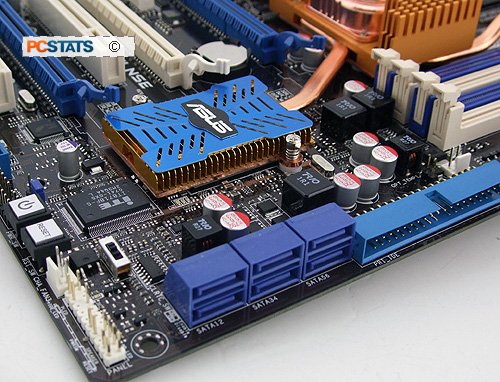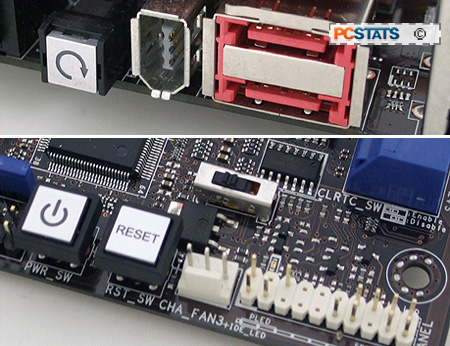|

|
For enthusiasts seeking the highest performance, most fully featured motherboards that any Taiwanese motherboard manufacturer is able to produce, one need look no further than ASUS' Republic of Gamers brand. The ASUS Striker II NSE motherboard continues in this tradition.
82% Rating: 
|
|
|
|
Home >
Reviews >
Motherboards >
ASUS Striker II NSE |
|
|
Motherboard Highlights Photo Gallery
|

The two blue PCI Express 2.0 x16 slots
and the middle PCI Express slot can be configured for two-way or three-way
SLI modes with selected NVIDIA graphics cards. There are also a pair of PCI
Express x1 slots, and a pair of PCI slots for legacy peripherals.
|
|

The NVIDIA nForce 790i Media and
Communications processor powers the six SATA II ports, and allows them to
be configured in RAID 0, 1, 5 and 10 configurations. It
also controls the IDE port.
|
|

There are four DDR3 slots on the ASUS Striker
II NSE motherboard, with a maximum capacity of 8GB. Supported RAM
speeds are 800/1066/1333MHz, with unofficial support for 1600MHz memory
through overclocking. |
|

The ASUS Striker II NSE motherboard can run at
800/1066/1333/1600MHz Front Side Bus speeds, and supports Pentium D, 4 and
Extreme processors, as well as Core 2 Duo, Quad and Extreme processors,
including the new 45nm Wolfdale and Yorkfield processors.
|

ASUS' Stack Cool 2 adds a copper
layer in between the PCB layers that allows motherboard components to use
the entire underside of the motherboard as a surface area for cooling.
|
|

The Striker II NSE motherboard has on-board
Power and Reset switches that allow the motherboard to be turned on and
off without installing it in a case. There's also a BIOS reset button
located on the I/O shield that restores default settings, should a bad
overclocking setup make the BIOS inaccessible.
|
|
|
|
|
